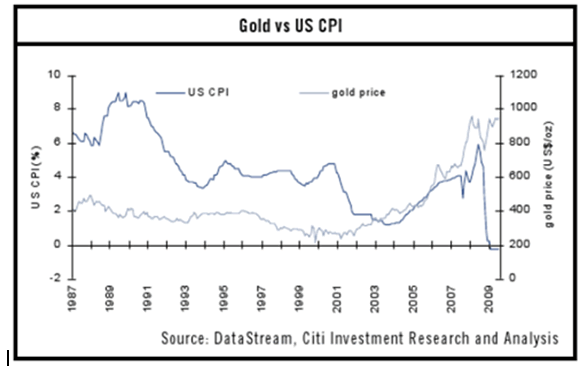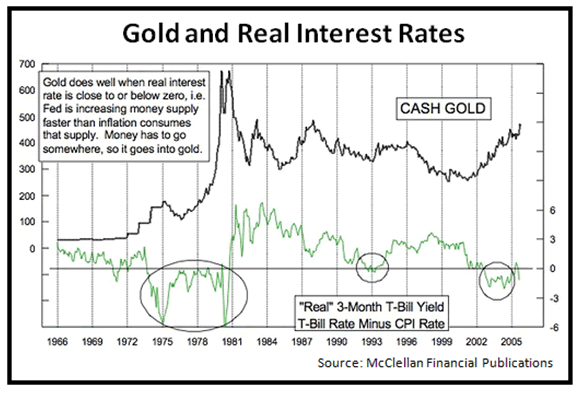The Real Reason Not to Bet Against Gold
Commodities / Gold and Silver 2010 Dec 22, 2009 - 10:44 AM GMTBy: Q1_Publishing
 The much anticipated gold correction hit faster than most expected.
The much anticipated gold correction hit faster than most expected.
After weeks of eerily consistent gains, gold is now shedding anywhere from $20 to $50 on the down days and struggling to post $10 upticks on short-lived rebounds.
On top of that, the U.S. dollar is showing its first signs of strength in months.
The new trend in gold is down. And as you might expect, the short-sighted “hot money” is finding all the reasons they can to justify selling gold.
But as you’ll see in a moment, there’s one real reason it’s still way too early to be betting against gold.
The Mainstream Goes With the Flow
All the warnings signs were there. Gold just got too hot. A healthy correction was imminent.
As of right now, gold at $1100 an ounce has done just that – corrected. It’s down 10%.
Here’s the thing though. Since gold prices have fallen, almost everyone is jumping on board to find reasons why gold is going down.
One of the “best” cases against gold came from a recent report from everyone’s favorite, nearly-nationalized lender, Citigroup (NYSE:C).
In a recent research report, Citigroup proposes, “There is no obvious relationship between the gold price and inflation.”
The firm points to the chart below as evidence:

OK, the chart does show a poor correlation between the ultimate inflation hedge and inflation. Of course, the chart conveniently starts in 1987 and the biggest divergence comes from the credit crunch, when forced selling caused all sorts of market anomolies.
Forget about inflation though. It’s only one piece of the gold puzzle.
There’s something else at work in the gold market, something most investors will miss, but is crucially important.
The “Real” Reason for Gold’s Rise
The main driver for gold prices is real interest rates.
Real interest rates are calculated by taking the nominal rate of interest (what is actually paid) and subtracting inflation.
Right now real interest rates are negative. They’re below zero. And the impact of negative real interest rates is always the same, asset bubble.
You see, when real interest rates are below zero, cash and short-term investments lose money. In this environment it’s nearly impossible to find decent yields. That’s why savings accounts, CDs, and bonds are paying next to nothing. As a result, savers and investors are forced to turn to other assets which offer return above inflation.
Historically, when real interest rates are negative, they turn to gold.

As you can see, there is a strong relationship between real interest rates and gold prices.
When real interest rates are negative, gold goes up. When real interest rates are positive, gold goes down.
The key thing is though, how long real interest rates can stay negative. Because, as long as real rates are negative, more and more investors will turn to gold.
For instance, in the 70s gold boom, gold’s ultimate high was determined not necessarily by how low real interest rates fell, but how long they stayed there. And the big gold correction in the mid-70s came when real interest rates were trending back towards positive territory.
That’s what’s going on right now. There’s a real expectation the Fed will raise rates next year which would push real rates higher.
That makes sense on paper, but only if you forget the wave of adjustable rate mortgage (ARM) resets, stubbornly high unemployment, and the most important variable the Fed is watching most closely.
Bernanke’s Hands are Tied
At this point, there’s no way the Fed can raise rates. Sure, it could take them up a quarter or a half point, but it will not do much more than that.
Over the past two years we’ve watched natural deflationary forces in action. The Fed’s response has been to slash short-term interest rates to zero and depress long-term interest rates as much as it can. Meanwhile, the official inflation rate is starting to increase and, depending on the source, the actual rate of inflation is much higher.
Basically, we’re going to be in a negative interest rate environment for the foreseeable future. And extended periods of low and/or negative real interest rates have always led to asset bubbles. Recently, low rates were key drivers of the tech bubble and the real estate bubble.
Now, with little economic opportunity, more and more investors will probably find the luster of gold too enticing.
So while the mainstream focuses on inflation, they’re missing the real catalyst for gold’s recent correction to be looked back upon as exactly that – a correction and a buying opportunity.
Good investing,
Andrew Mickey
Chief Investment Strategist, Q1 Publishing
Disclosure: Author currently holds a long position in Silvercorp Metals (SVM), physical silver, and no position in any of the other companies mentioned.
Q1 Publishing is committed to providing investors with well-researched, level-headed, no-nonsense, analysis and investment advice that will allow you to secure enduring wealth and independence.
© 2009 Copyright Q1 Publishing - All Rights Reserved
Disclaimer: The above is a matter of opinion provided for general information purposes only and is not intended as investment advice. Information and analysis above are derived from sources and utilising methods believed to be reliable, but we cannot accept responsibility for any losses you may incur as a result of this analysis. Individuals should consult with their personal financial advisors.
© 2005-2022 http://www.MarketOracle.co.uk - The Market Oracle is a FREE Daily Financial Markets Analysis & Forecasting online publication.



